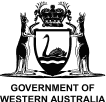Posidonia Australia. Credit: Jennifer Verduin, Murdoch University.
Westport has partnered with the Western Australian Marine Science Institution (WAMSI) to deliver the $13.5 million WAMSI-Westport Marine Science Program. This 3-year program is developing the latest data, information and modelling on the complex environmental systems and community values associated with Cockburn Sound.
Project 2.3: Seagrass restoration
Project Theme: Benthic habitats and communities
Researchers: G Kendrick, R Austin, G Ferretto, M van Keulen, J Verduin
Publication date: December 2023
The importance of seagrass
Cockburn Sound is home to seagrass that is temperate and slow growing. The seagrass meadows in the area are important to the overall eco-system, acting as nurseries for snapper spawning, crabs and whiting.
However, the seagrass meadows in Cockburn Sound have been heavily impacted by historical activities, and in particular, industrial discharges of wastewater.
Since the 1990s, there has been more than 110 seagrass restoration projects in Cockburn Sound and Owen Anchorage, including Seeds for Snapper – Australia’s largest seagrass restoration program to date, which is currently underway.
This study reviewed previous seagrass restoration programs, from the methods used through to the timelines, results, and costs, to understand how well each technique worked, and develop approaches for the future, which can be implemented at scale.
The study was commissioned by Westport and the findings have been used in the design of the proposed port and breakwater, to avoid and minimise impacts to seagrass. As Westport moves into development, this research, along with further reports underway will provide a roadmap for seagrass restoration on a wide scale in Cockburn Sound, with potential to rehabilitate 100s of hectares.
What the report found:
- Seagrass meadows in Cockburn Sound are slow growing, and many programs only last 1 to 3 years. More accurate results would be best evaluated after 5+ years.
- The methods used for seagrass restoration programs have been diverse, using shoots (sprigs, plugs, cores, hessian bags), seedlings and seeds.
- Environmental conditions at the time of ‘planting’, and processes used are critical to the success of the project.
- To improve success rates, it’s critical to identify which environments are most suitable for natural seagrass colonisation.
The report recommends further research over the coming years, with the following guidelines and detailed analysis into:
- Restoration suitability models to identify and select the areas with the best likelihood of success, particularly for large-scale restoration.
- The supply of and volume required of source materials.
- Further restoration trials to optimise success and identify the best way to scale-up restoration programs.
- How restoration programs can be informed by other interrelated WAMSI-Westport science programs, including snapper spawning and benthic habitat mapping.
The work being done by scientists now will enable Westport to undertake significant seagrass restoration programs, where more seagrass is replaced than is impacted, and is anticipated to elevate standards for seagrass restoration programs in Cockburn Sound.
You can read the full report here.





